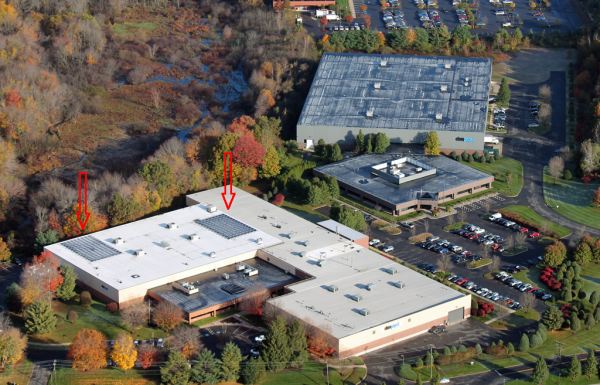At ebm-papst, our philosophy is focused on constantly trying to improve the effect the company has on the environment, whether through the products manufactured here or by the actions of those that represent the company. A recent undertaking was the installation of solar panels on the Tech Center and Manufacturing Facility at 110 Hyde Road. The solar panels became operational on June 16, 2011. The power generated by the panels is enough to satisfy the needs for powering the Tech Center offices. At the peak output, the panels are capable of producing 50kw of electricity.
Some facts and figures:
-
238 solar panels
-
32 Mega-watt hours have been generated to date
-
Daily electricity production is more than enough to power the Tech Center offices
-
Environmental equivalent to planting 425 trees

This is an aerial shot of the new solar panels on the Tech Center and Manufacturing Facility at ebm-papst. In the background are the corporate offices.


 Less of a campaign, and more a way of life, GreenTech is a name put to the philosophy ebm-papst has used for decades. "Each new product that we develop has to be better than its predecessor in terms of economy and ecology." An example of that philosophy in action is the ACmaxx series. This series started as an attempt to advance the standard technology of the
Less of a campaign, and more a way of life, GreenTech is a name put to the philosophy ebm-papst has used for decades. "Each new product that we develop has to be better than its predecessor in terms of economy and ecology." An example of that philosophy in action is the ACmaxx series. This series started as an attempt to advance the standard technology of the